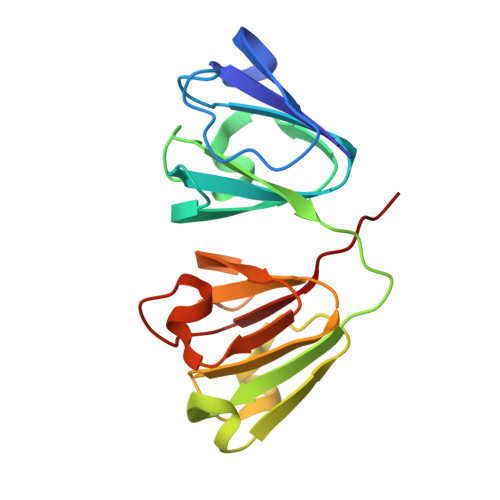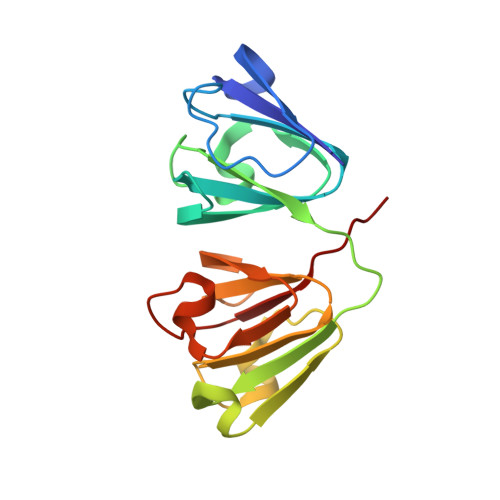Surface Exposed Free Cysteine Suppresses Crystallization of Human gamma D-Crystallin.
Strofaldi, A., Khan, A.R., McManus, J.J.(2021) J Mol Biol 433: 167252-167252
- PubMed: 34537240
- DOI: https://doi.org/10.1016/j.jmb.2021.167252
- Primary Citation of Related Structures:
7P53 - PubMed Abstract:
Human γD-crystallin (HGD) has remarkable stability against condensation in the human lens, sometimes over a whole lifetime. The native protein has a surface exposed free cysteine that forms dimers (Benedek, 1997; Ramkumar et al., 1864) 1,2 without specific biological function and leads to further protein association and/or aggregation, which creates a paradox for understanding its stability. Previous work has demonstrated that chemical modification of the protein at the free cysteine (C110), increases the temperature at which liquid-liquid phase separation occurs (LLPS), lowers protein solubility and suggests an important role for this amino acid in maintaining its long-term resistance to condensation. Here we demonstrate that mutation of the cysteine does not alter the structure or solubility (liquidus) line for the protein, but dramatically increases the protein crystal nucleation rate following LLPS, suggesting that the free cysteine has a vital role in suppressing crystallization in the human lens.
Organizational Affiliation:
Department of Chemistry, Maynooth University, Maynooth, Co. Kildare, Ireland; H. H Wills Physics Laboratory, University of Bristol, Bristol BS8 1TL, United Kingdom.
















